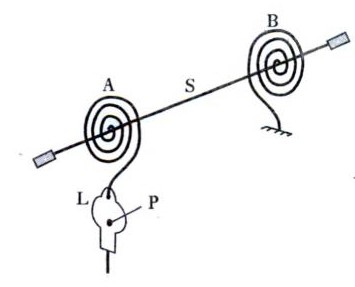Springs in controlling mechanisms are wound in:
Springs in controlling mechanisms are wound in:
Right Answer is:
Opposite directions
SOLUTION
- In instrument control mechanisms using two springs, the springs are indeed wound in opposite directions.
- In measuring instruments like ammeters or voltmeters, two springs (A and B) are used to ensure the needle shows an accurate reading.
- These springs are wound in opposite directions.
- When the needle rotates, one spring (let’s say A) winds up, while the other spring (B) unwinds.
- Together, these springs create a force that tries to return the needle to its original position.
- This force is known as the controlling torque.
- The torsional torque of these springs is directly proportional to the angle of rotation of the needle.
- This means the more the needle rotates, the greater the torsional force generated within the springs, and the greater the controlling torque applied

